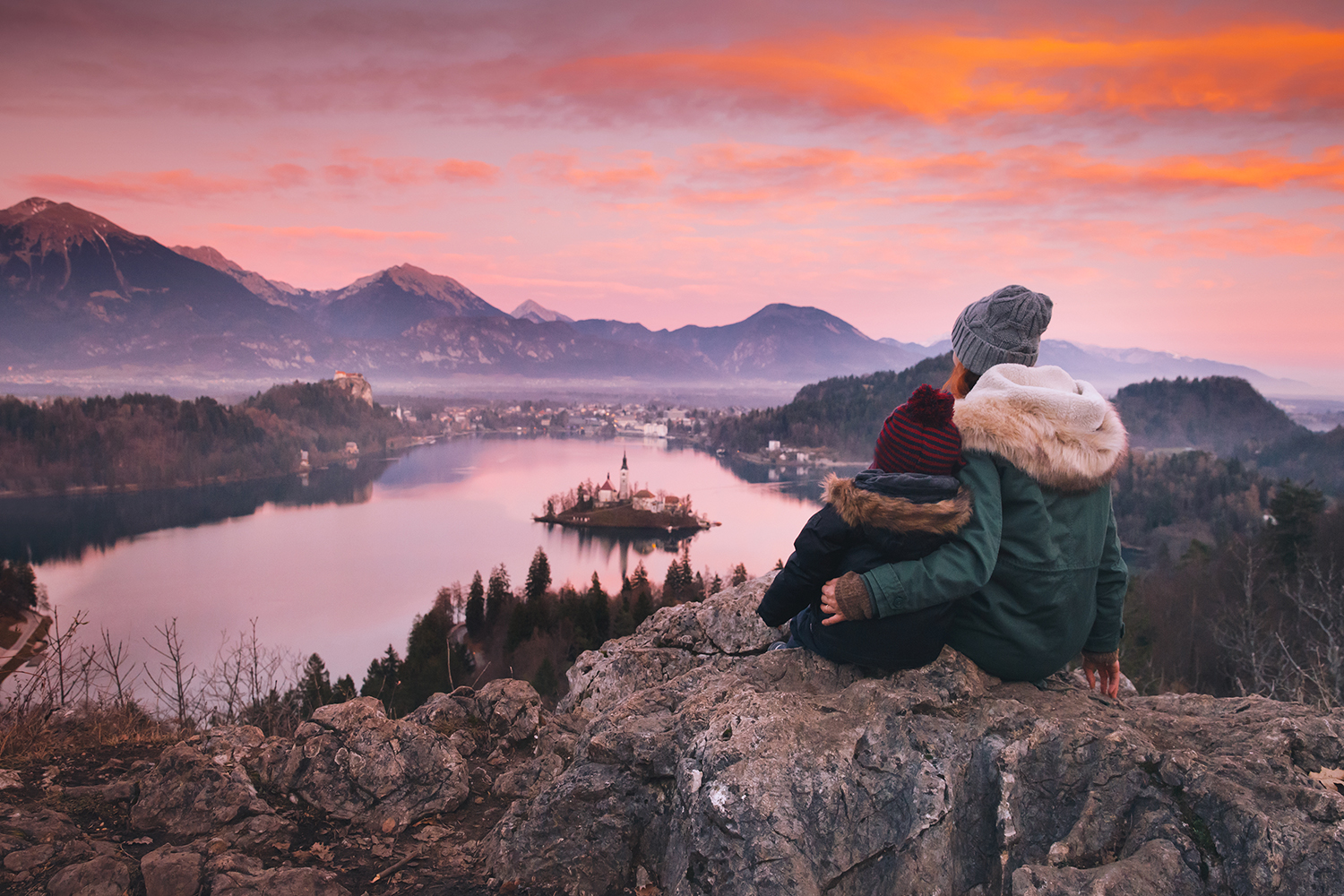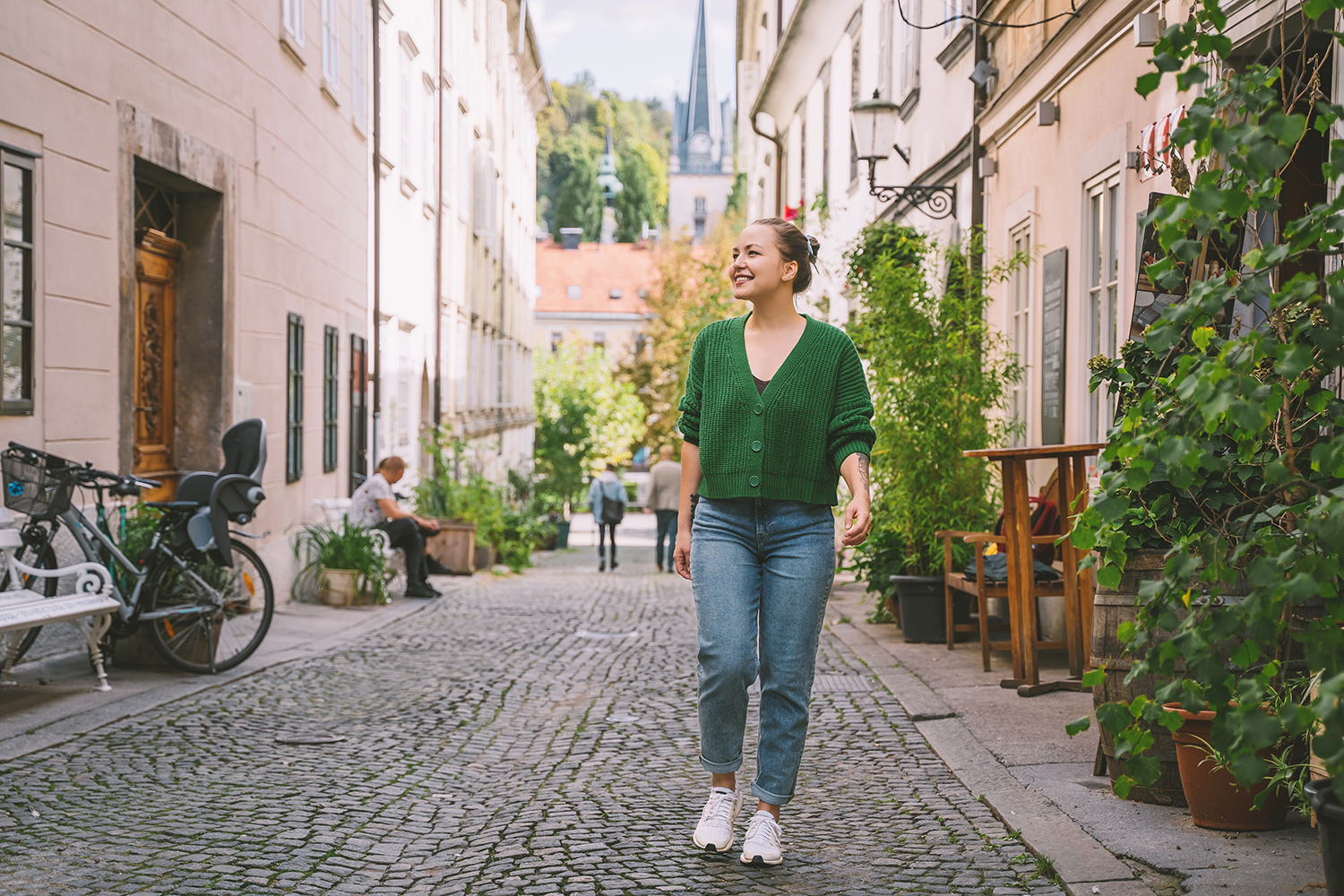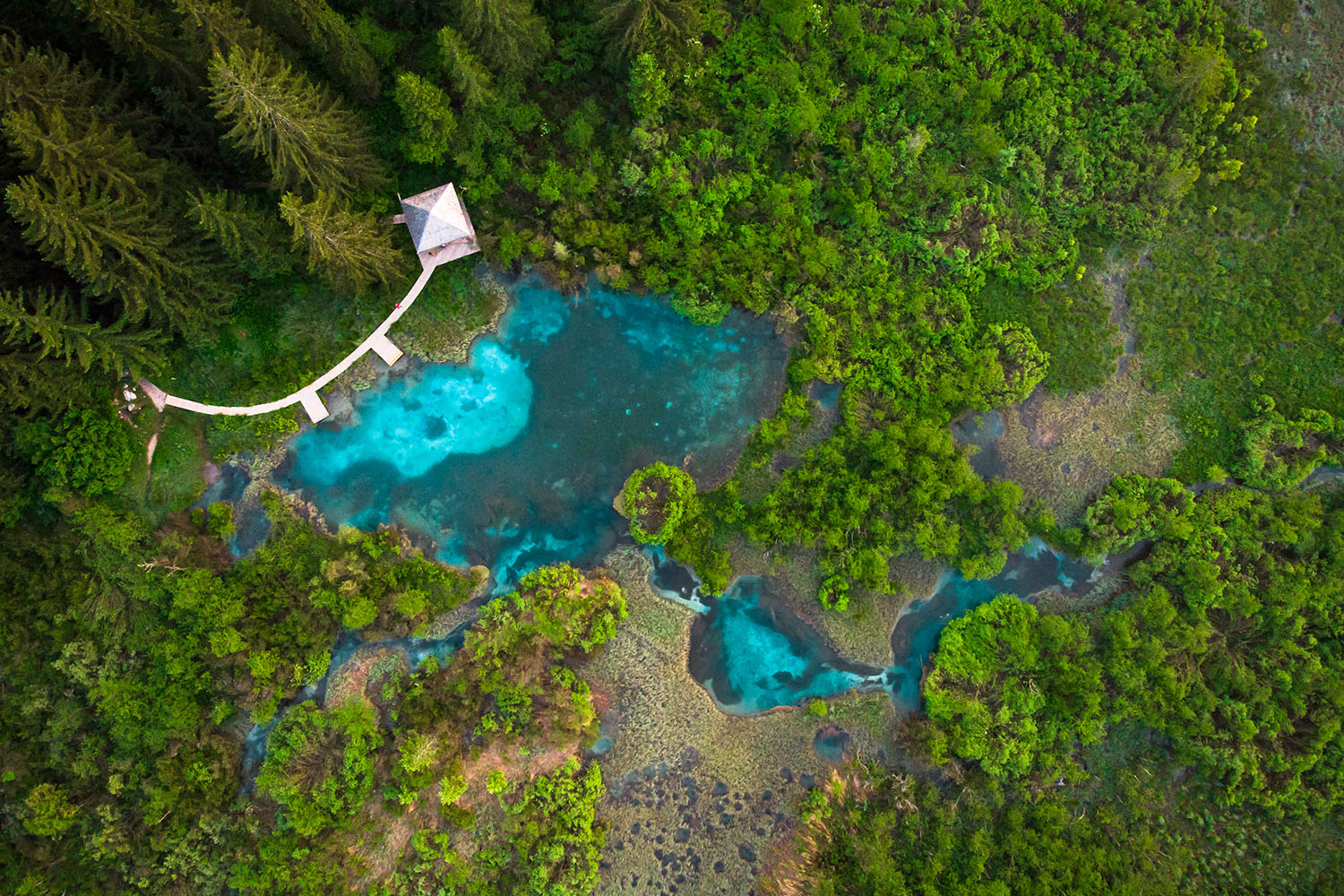What can we learn from Slovenia?
Small but powerful!
Slovenia – a land full of lush nature, picturesque spots, and one of the headquarters of the Travel Different project. In our last article, we have already touched upon the EU's compendium of best practices of the "European Capital of Smart Tourism" award and looked at what cities in Europe are already doing to combat climate change (1). Now, we will focus on the actions taken within Slovenia. While many might not have heard about this hidden gem in Central Europe, it has already been recognised internationally for its outstanding actions in regard to sustainability.
Ella Pommeranz
Nature plays a crucial role in the Slovenian society which is also reflected in the country's efforts for sustainability, and ultimately in the capital city Ljubljana being awarded Europe's Greenest Capital in 2016 by the EU.
The green lung of Central Europe
Nestled in between the Austrian mountains and the Croatian as well as Italian coasts, Slovenia offers a variety of sceneries catered to everyone's needs. Everything from mountains, valleys, coastal towns and even plain fields with vineyards can be found in this considerably small country. Further, around 60% Slovenia's landscape is covered in dense forests (2). More than 40 parks are home to almost 20,000 species of flora and fauna. Overall, nature plays a crucial role in the Slovenian society which is also reflected in the country's efforts for sustainability, and ultimately in the capital city Ljubljana being awarded Europe's Greenest Capital in 2016 by the EU (3). The following year, Slovenia achieved 96 out of 100 sustainability criteria (in terms of biodiversity, cultural authenticity, and many more), earning the distinction of being the world's most sustainable nation (2). Further, Natura 2000, which identifies special areas of conservation to safeguard Europe's plant and animal habitats, has designated 37.87% of Slovenia as conservation territory (4, 5). Out of the 27 EU member states, this is the highest share.
Examples of sustainable measures
I myself have lived in Ljubljana for a year during my studies and was surprised to see in how many small ways the city is dedicating itself to sustainable solutions. In general, Ljubljana is moving toward becoming a zero-waste economy. In 2017, the city gathered 67% of the collected home rubbish separately, which was the highest share within the EU (6). Another great "goodie" is the free drinking fountains that are located all over the city and offer delicious fresh water wherever you go. This is also related to the clean drinking water act (7). In order to prevent commercialisation of drinking water and make it a fundamental right for all inhabitants, Slovenia modified its constitution. Additionally, the city's core is expanding its green areas while giving pedestrians and cyclists priority over the cars that originally drove through the entire city. Only natural gas-powered city buses are granted passage (8). Further, since 74% of Ljubljana's homes use natural gas for heating, less of the fossil fuels that are responsible for the majority of the world's carbon emissions are consumed. Finally, Slovenia has become one of Europe's most sustainable countries as a result of numerous policies from the government connected to education (5). Education for sustainable development has been integrated into the curricula at all levels of schooling, from kindergarten to college, as sustainability has recently taken the spotlight in the nation's educational system.
Tourism, but make it sustainable
As we all know, tourism can have quite some detrimental effects on the environment and societies if not managed well. That is why the Slovenian government has chosen to sign a pledge for sustainability in its tourism policies. The Green Scheme of Slovenian Tourism, a tool created at the national level and concurrently a certification scheme, is one of the actions implemented. It unifies all initiatives aimed towards Slovenia's tourist industry's sustainable growth, provides destinations and service providers with tools to assess and enhance their sustainability efforts, and advertises these green initiatives under the Slovenia Green brand (9).
On a smaller scale, Ljubljana and Maribor both committed to greener tourism by providing, for example, electric minicars that may be used to go about the city centres at no cost (1, 10). The cities want to provide residents and visitors with a wide range of options for getting around town with the least amount of negative impact on the environment. I have ridden these electric vehicles myself and I have to say that they are a fun, sustainable way to explore the city or to simply be used as a free taxi whenever you are feeling too lazy to walk somewhere.
Now it's up to you! Or: Enjoy with caution
Sharing best practices around the world can help destinations, travellers and citizens to learn more about already implemented solutions as these show that they already work (or not). While every place or person comes with their own unique challenges, we hope that these insights might inspire others to follow a similar path and contribute to a more sustainable tourism. Nonetheless, it is important to keep in mind that this is just one side of the story and a snippet of what is being done in Slovenia, meaning that one will have to assess the actual impacts of those actions as greenwashing has also shown to become a common practice in the past. While Slovenia is a very green country indeed and profits from the abundance of vast nature for its image as well as its tourism, the fact that tourism actually harms nature cannot be neglected – potentially leading to a conflict of interests. Further, one must be aware that even the most sustainable measures can only make up for a fraction of the environmental consequences that naturally come with tourism. It is thus in our hands to raise awareness of the issues that arise from travelling, as well as strive to leave minimal to no negative impact behind us.
References
- European Commission. (n.d.). Compendium of Best Practices. Retrieved October 10, 2022, from https://smart-tourism-capital.ec.europa.eu/system/files/2022-05/Best%20Practice%20Report_2022_Update.pdf.
- Christ, C. (2018, June 27). This Is the World's Most Sustainable Country. In: National Geographic. Retrieved October 10, 2022, from https://www.nationalgeographic.com/travel/article/worlds-most-sustainable-eco-green-country.
- European Commission. (2016). EU Green Capital 2016. Retrieved October 10, 2022, from https://ec.europa.eu/environment/pdf/europeangreencapital/ljubljana-2016-leaflet-web.pdf.
- Ford, C. (2017, April 17). Slovenia has been named the greenest country in the world, and this is why. Contiki. Retrieved November 21, 2022 from https://www.contiki.com/six-two/slovenia-has-been-named-the-greenest-country-in-the-world-and-this-is-why/.
- Dragovic, B. (2022, July 13). How Slovenia Became One of the Most Sustainable Countries in Europe. Earth.Org. Retrieved November 21, 2022 from https://earth.org/slovenia-most-sustainable-countries/#:~:text=Considering%20the%20green%20mindset%20of,sustainable%20countries%20in%20the%20world.
- Zero Waste Europe. (2015, May 15). New case study: The story of Ljubljana, first Zero Waste capital in Europe! Retrieved October 12, 2022, from https://zerowasteeurope.eu/press-release/new-case-study-the-story-of-ljubljana-first-zero-waste-capital-in-europe/.
- The Guardian. (2016, November 18). Slovenia adds water to constitution as fundamental right for all. Retrieved October 12, 2022, from https://www.theguardian.com/environment/2016/nov/18/slovenia-adds-water-to-constitution-as-fundamental-right-for-all.
- Sigit, S.A. (2018, July 13). What Is The Most Sustainable Country? The Answer Is Slovenia. Earthbuddies. Retrieved November 22, 2022, from https://earthbuddies.net/sustainable-country-slovenia/.
- Slovenian Tourist Board. (n.d.). Green Scheme of Slovenian tourism. Retrieved October 13, 2022, from https://www.slovenia.info/en/business/green-scheme-of-slovenian-tourism.
- Visit Maribor. (n.d.). City centre with electric vehicle. Retrieved October 13, 2022, from https://www.visitmaribor.si/en/what-to-do/transports/6314-.



